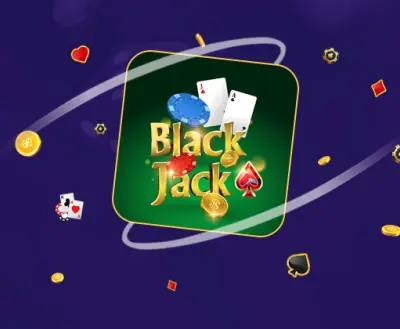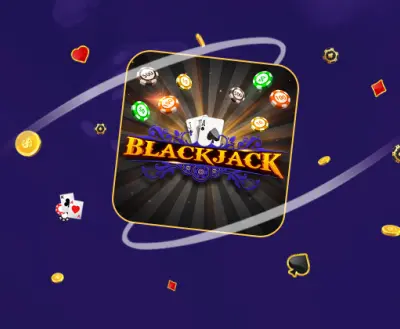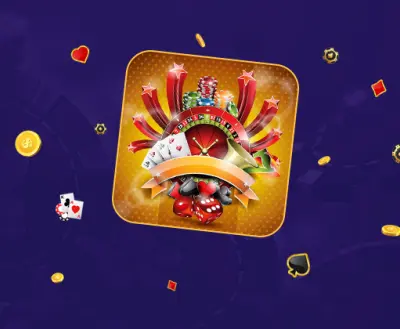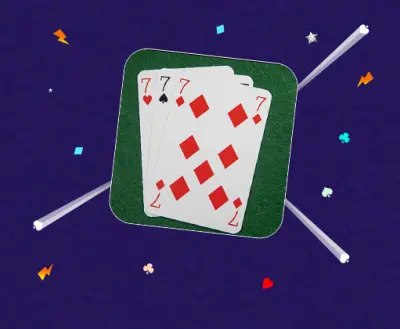Table of Contents:
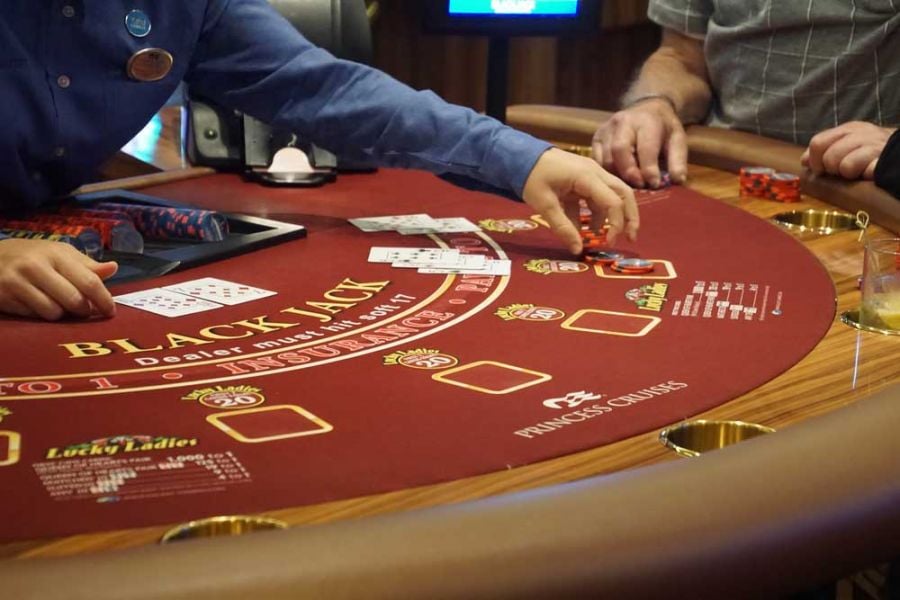
Before getting further into Blackjack card counting, it is essential that you memorise the basic Blackjack strategy chart inside out and back to front, to put yourself in a strong position against the house.
Of course, Blackjack strategy alone won’t be enough to seal the deal, and it still takes skill and hard work to improve your game, even once you’ve got the basic strategy down.
Getting any kind of movement in house edge is critical to success in online blackjack. As a direct head to head between you and the house, the best thing that you can do as a player is to try reduce the house edge as much as possible.
The primary way of reducing the house edge in blackjack as standard is to play according to basic blackjack strategy, the mathematical computations of how to proceed with different hands.
Now that you have learned about the basic Blackjack Strategy, we can dive into the next technique that you can turn your attention to: Blackjack Card Counting.
What is Card Counting in Blackjack?
Card counting is a technique used in the game of blackjack to track the ratio of high cards to low cards remaining in the deck or shoe. The idea behind card counting is that the game of blackjack uses a fixed number of cards, usually unshuffled between hands. At its simplest, consider a one-deck game containing 52 cards. As each card is dealt, the cards remaining in the deck become fewer and this can skew in particular directions, depending on the random order of the deck, leaving more cards of a certain value still to be drawn.
If the game is a one on one between you and the house, the more high cards you draw in early hands, the fewer there will be available to draw in later rounds. Similarly, if you draw more low value cards in the early rounds, your chances of drawing higher value, potentially blackjack worthy cards in the following hands rapidly increases. If you play blind, with no method of tracking cards, you can only assume a matched probability with each hand – that you are as likely to hit 21 on your first hand as your last. But in the above scenario, it’s easy to see how these odds can swing wildly from neutral, depending on how the cards fall. Card counting aims to address this imbalance.
History of Card Counting - Edward O. Thorp’s Story
Edward Oakley Thorp is the man credited with introducing the concept of card counting to the world. An academic, professor, investor and laterally highly successful author, his gift for mathematics would allow him to expound the theory in his international best seller, Beat the Dealer, still the definitive text on card counting for those who are intrigued to find out more, and maybe to practice their skills a little.
Edward Thorp was formerly a senior professor at several Ivy League universities in the US, and carried a prestige and academic credence that is too often drowned out in gambling circles. Using his close understanding of mathematics and probability, Thorp was able to condense his work on blackjack into a volume that could be more easily digested by casual players, and would go on to spark a raft of card counting attempts at casinos worldwide.
To this day, Thorp’s methods are still deployed by blackjack players at casinos and private games, each trying to get an edge on the house based on a better knowledge of the probability of the dealer’s hand. As a result, there have been some impressive wins from players implementing card counting when playing blackjack.
Most Commonly Used Card Counting Systems In Blackjack
If you can count cards by some workable mechanism, you can start to capitalise on the information that comes out during the game, helping you bias your decision making in the right direction. There are several different card counting systems, each with their own advantages and disadvantages. Some systems are more complex and require more skill to master, while others are simpler and easier to use. Some of the most popular card counting systems include the Hi-Lo system, the Hi-Opt I system, and the Ace/Five system.
1. Hi-Lo System
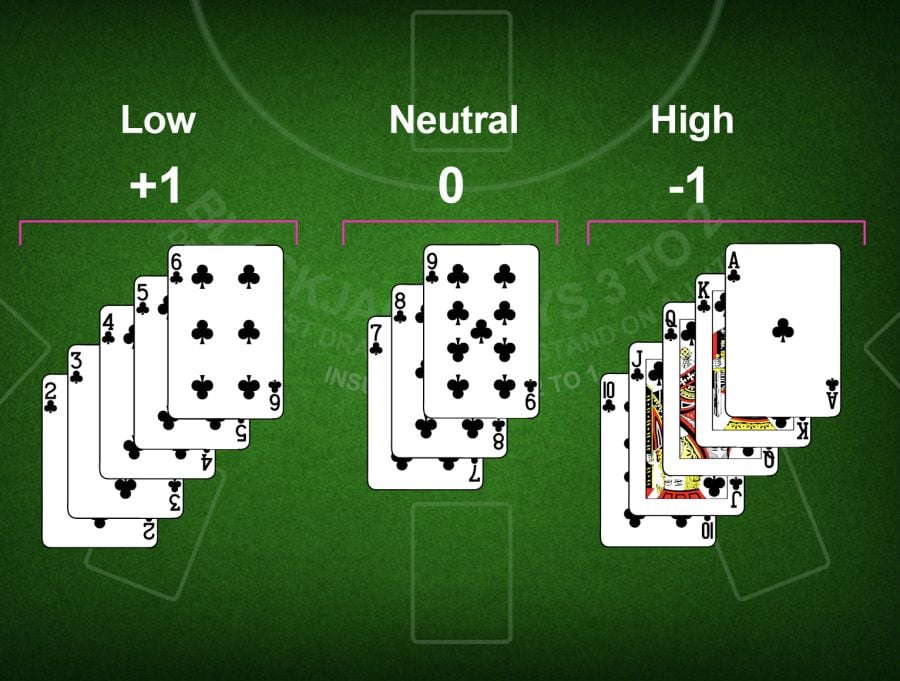
The Hi-Lo card counting system is a popular system used to keep track of the proportion of high and low-value cards remaining in a deck of cards while playing blackjack. The system assigns a point value to each card in the deck, with the goal of keeping a running count of the total point value as cards are dealt.
How to count cards in Blackjack using Hi-Lo?
The system assigns the following point values to each card:
- Low-value cards (2-6) are assigned a value of +1
- High-value cards (10-Ace) are assigned a value of -1
- Mid-value cards (7-9) are assigned a value of 0
As cards are dealt, the player keeps a running count of the total point value by adding or subtracting the point value of each card as it is dealt. The count starts at 0 and increases as more low-value cards are dealt and decreases as more high-value cards are dealt. The higher the count, the more favourable the deck is for the player, as there are more low-value cards left in the deck.
The player can use the running count to make adjustments to their betting and playing strategy. For example, if the count is high, the player may want to increase their bet, as the deck is more favourable to them. Additionally, the player can use the count to make adjustments to their basic strategy, such as taking insurance, splitting pairs, and hitting or standing.
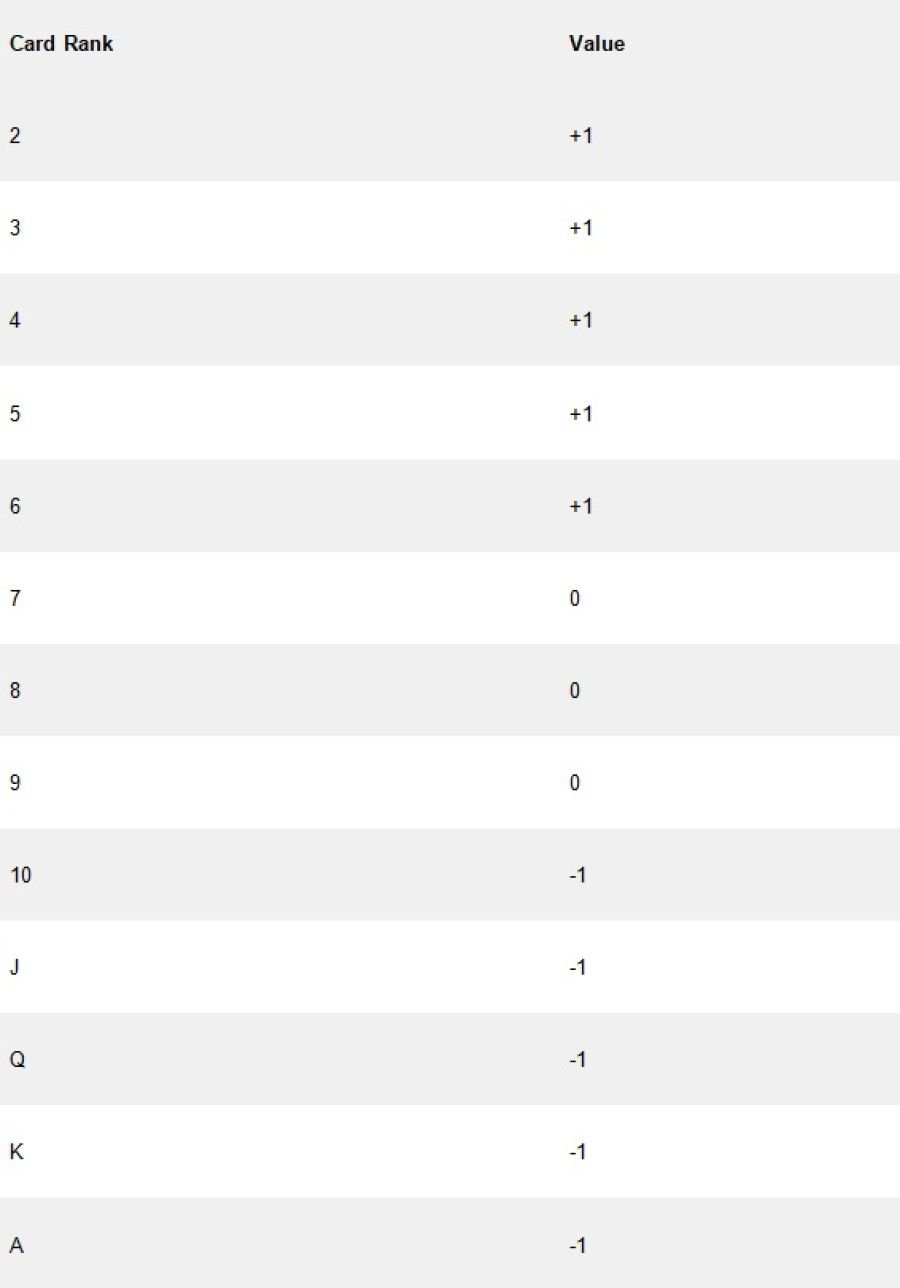
2. Highly Optimum I (Hi-Opt I) System
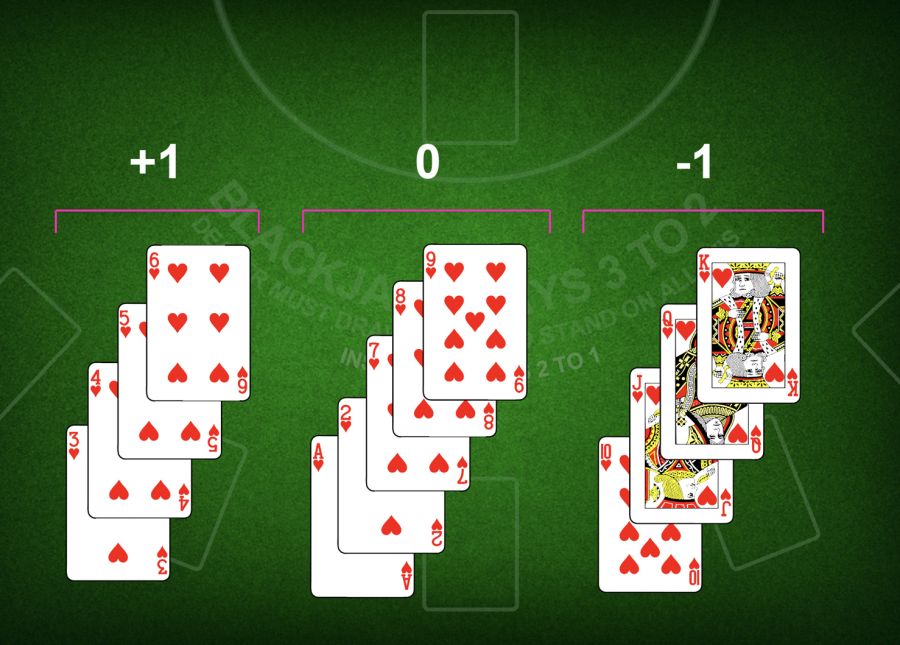
The Highly Optimum I card counting system, also known as Hi-Opt I, is a more advanced level system used in blackjack to also track the proportion of high and low-value cards remaining in the deck. The system, similarly to the Hi-Lo system, assigns a point value to each card in the deck with the same goal - to keep a running count of the total point value as cards are dealt.
How to count cards in Blackjack using Hi-Opt I?
To begin, the player starts with a mental running count of 0 when they arrive at the table or when the deck is shuffled. They then add or subtract the point value of each card as it is dealt. This running count is used to make adjustments to the player's betting and playing strategy, following basic strategy.
The point values assigned to each card in Hi-Opt I are:
- Cards with a value of 2, 7, 8, 9 and Ace are assigned a value of 0
- Cards with a value of 3, 4, 5 and 6 are assigned a value of +1
- Cards with a value of 10, Jack, Queen and King are assigned a value of -1
It is recommended to use Hi-Opt I with single deck play, and as such, the player also needs to calculate their true count by dividing the running count by the number of decks remaining in the play.
When the true count exceeds 1, then the player can start increasing their bets steadily. This helps the player to take advantage of a favourable deck without drawing too much attention to themselves.
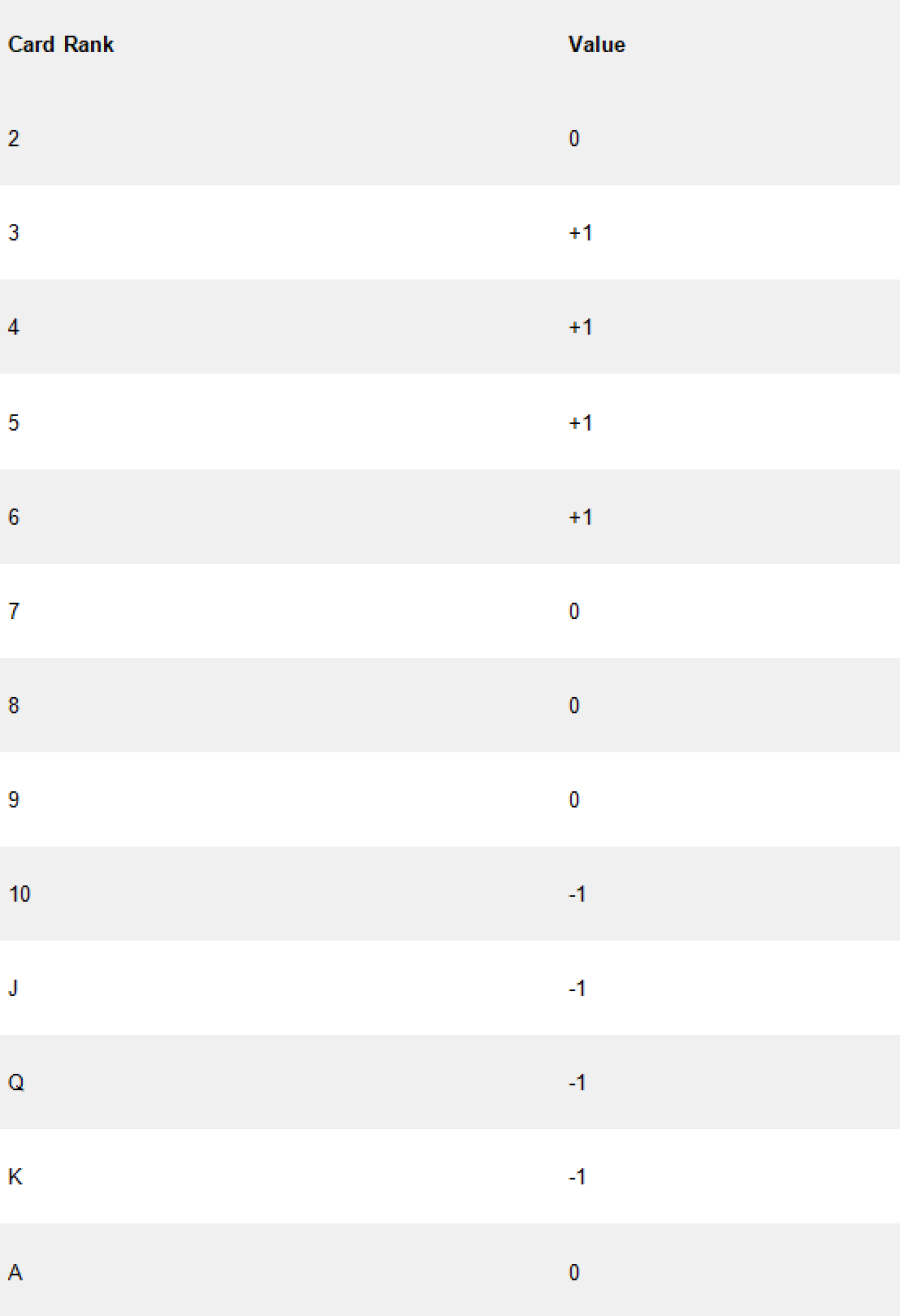
3. Ace/Five System
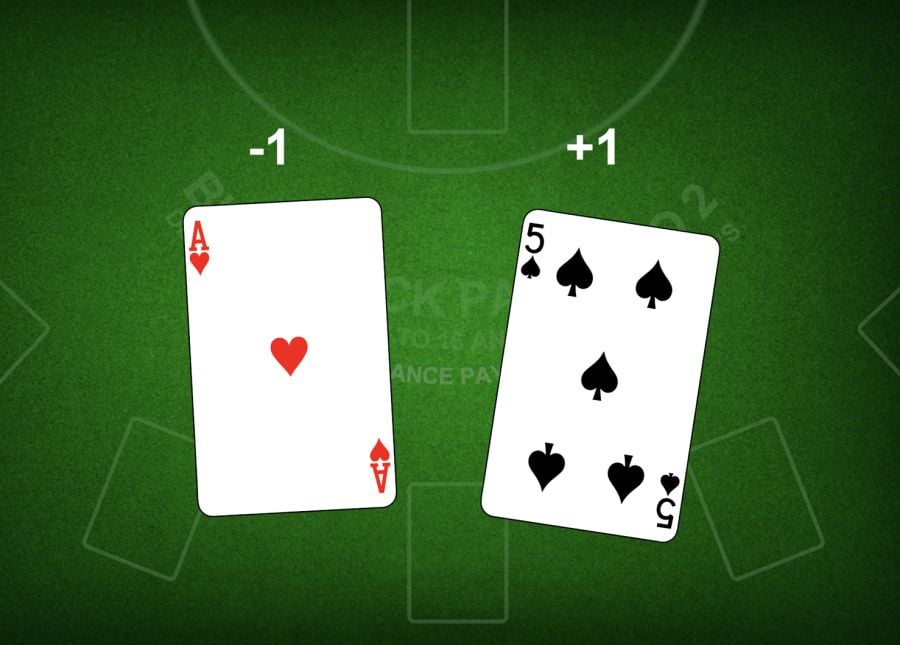
The Ace/Five system is a card counting method used in blackjack that can also be useful to most players, especially when they're beginners and new to counting cards in Blackjack. It helps reduce the house edge and the advantage that the house has over the players, though very partially.
How to count cards in Blackjack using Ace/Five?
To use this system, start counting from 0 at the beginning of the first deck. Whenever a 5-value card is dealt, add 1 to the count. When an Ace is dealt, subtract 1. If the final count is 2 or greater, it is a good time to double your bet. If the count is 1 or less, it is best to avoid placing high bets. This system is easy to keep track of because it only takes into account two card values.
However, it is most effective when the dealer does not frequently reshuffle the deck. To avoid detection, it is best to only double your bet after a win. The advantage gained from using this system is typically small, around 1%. The simplicity of this card counting method makes it suitable for inexperienced card counters to practice before moving on to more advanced methods like Hi-Lo.
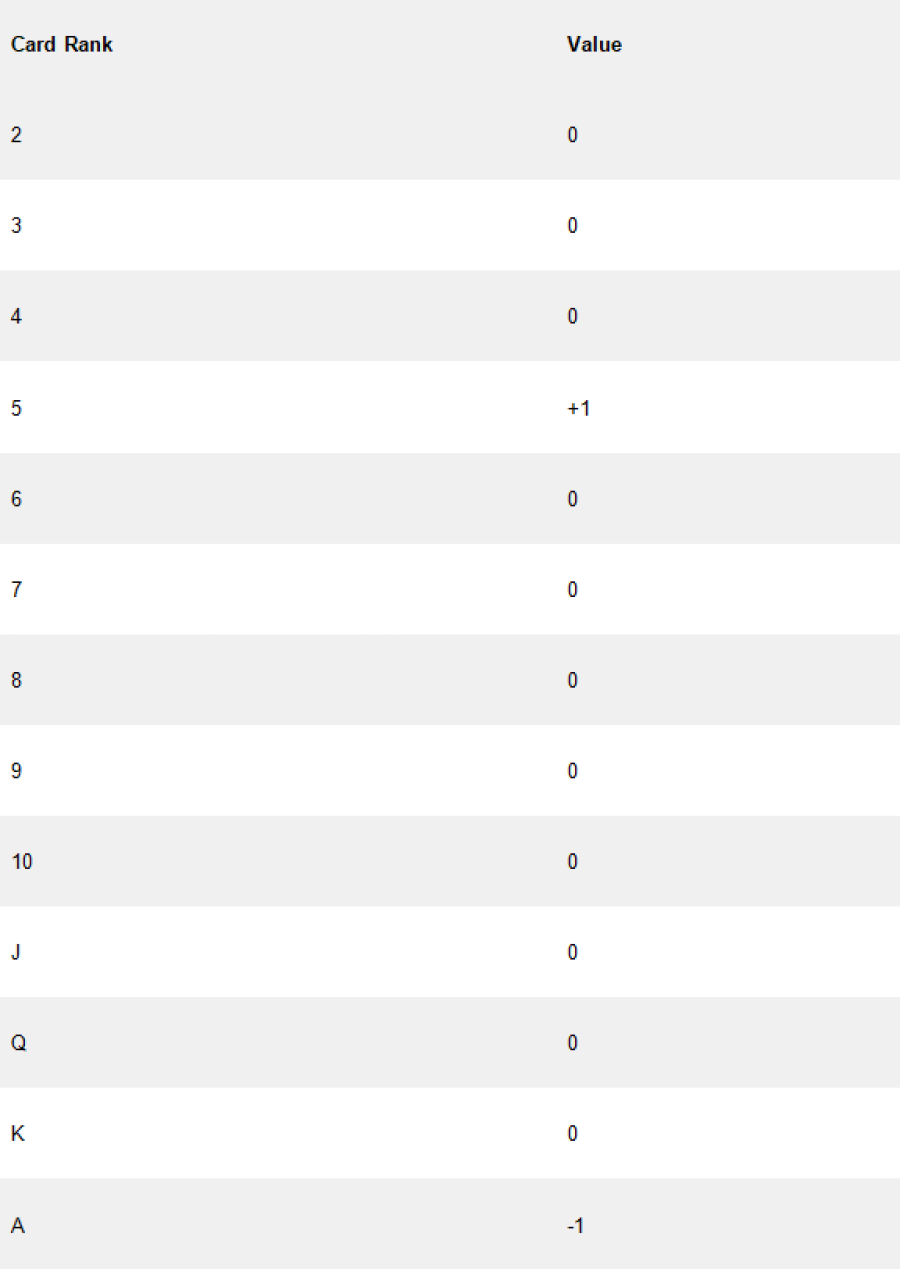
Final Verdict on Blackjack Card Counting
In practice, Blackjack card counting can be a difficult and challenging technique to master. This is because the casinos have implemented several countermeasures to prevent card counting, such as using multiple decks and implementing automatic shufflers. Additionally, blackjack is usually played in casinos with multiple decks of cards, stacked in a ‘shoe’. So instead of there being 4 Aces up for grabs, there might be 16, or 32. This makes it more challenging to keep count of the cards, but it’s still possible.
Players who develop their skills in this area and practice card counting can put the technique to use in live blackjack play, as an influencer that goes hand in hand with a solid basic strategy to virtually eliminate house edge.
Another point worth mentioning is that card counting is legal, but it is not acceptable in every casino. Some casinos may forbid players from counting cards, and may even ask players to leave if they are caught counting cards.
There are also some casinos that may use technology such as facial recognition software to identify known card counters and prevent them from playing.
For these reasons, card counting isn’t exactly something you should try on a Vegas Blackjack table. At least, if you do attempt to put this into practice, be prepared to be given short shrift on your prompt exit from the casino. Nevertheless, players can and do successfully still deploy Thorp’s methods.



